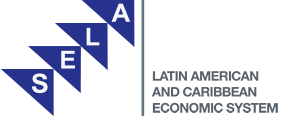MINIMUM RECOMMENDED BIBLIOGRAPHY
Introduction
P. Rossi, H. Freeman and M. Lipsey, “Identifying Issues and Formulating Questions”, “Expressing and Assessing Program Theory”, in op. cit. (Chapters 3 and 5), in their book Evaluation: A Systematic Approach, Thousand Oaks, Sage, 2004.
Kathryn E. Newcomer et al., “Planning and Designing Useful Evaluations” (Chapter 1), in Joseph Wholey, Harry Hatry and Kathryn Newcomer (eds.), Handbook of Practical Program Evaluation, San Francisco, Jossey-Bass, 3rd edition, 1994.
Methodologies of impact evaluation
Experimental method
Martin Ravallion, “The Mistery of Vanishing Benefits: An Introduction to Impact Evaluation”, The World Bank Economic Review, 15:1 (2001), pp. 115-140.
Leonard Wantchekon, “Clientelism and Voting Behaviour: Evidence from a Field Experiment in Benin”, World Politics, 55:3 (2003), pp. 399-422.
Methodologies of impact evaluation
Semi-experimental methods
Shahidur R. Khandker, Gayatri B. Koolwal and Hussain A. Samad, “Propensity-score matching”, “Double difference”, “Instrumental Variable Estimation”, “Regression Discontinuity and Pipeline Methods”, in their book Handbook on Impact Evaluation: Quantitative Methods and Practices, Washington, D. C., World Bank, 2010 (Chapters 4-7).
Qualitative impact evaluation
Fernando Cortés, Agustín Escobar and Mercedes González de la Rocha, Método científico y política social. A propósito de las evaluaciones cualitativas de los programas sociales, Mexico, El Colegio de México, 2008 (Chapters 1, 2 and 3).
Michael Bamberger, Vijayendra Rao and Michael Woolcock, Using Mixed Methods in Monitoring and Evaluation, Washington, DC, World Bank, 2010 (Policy Research Working Paper, 5245).






